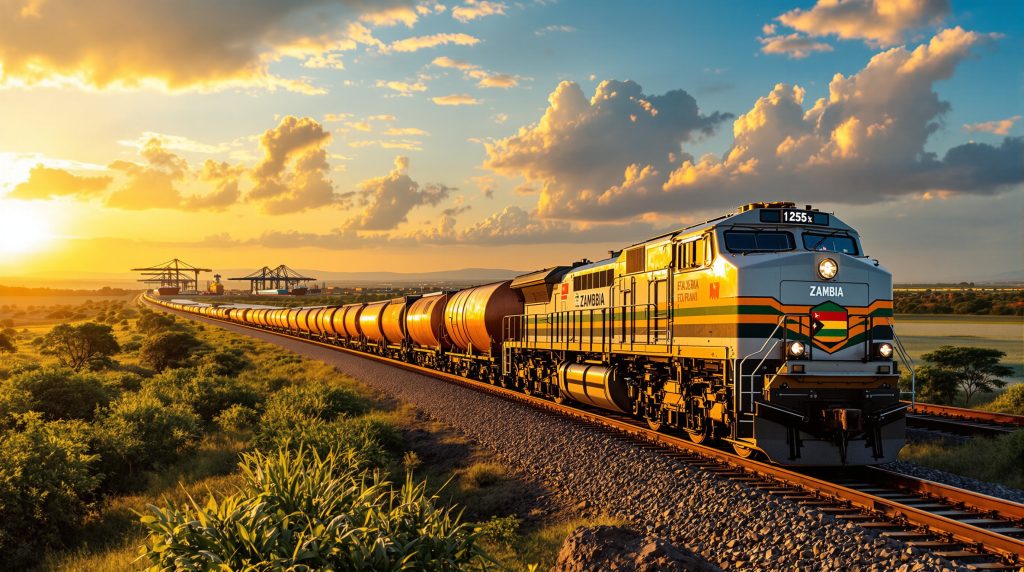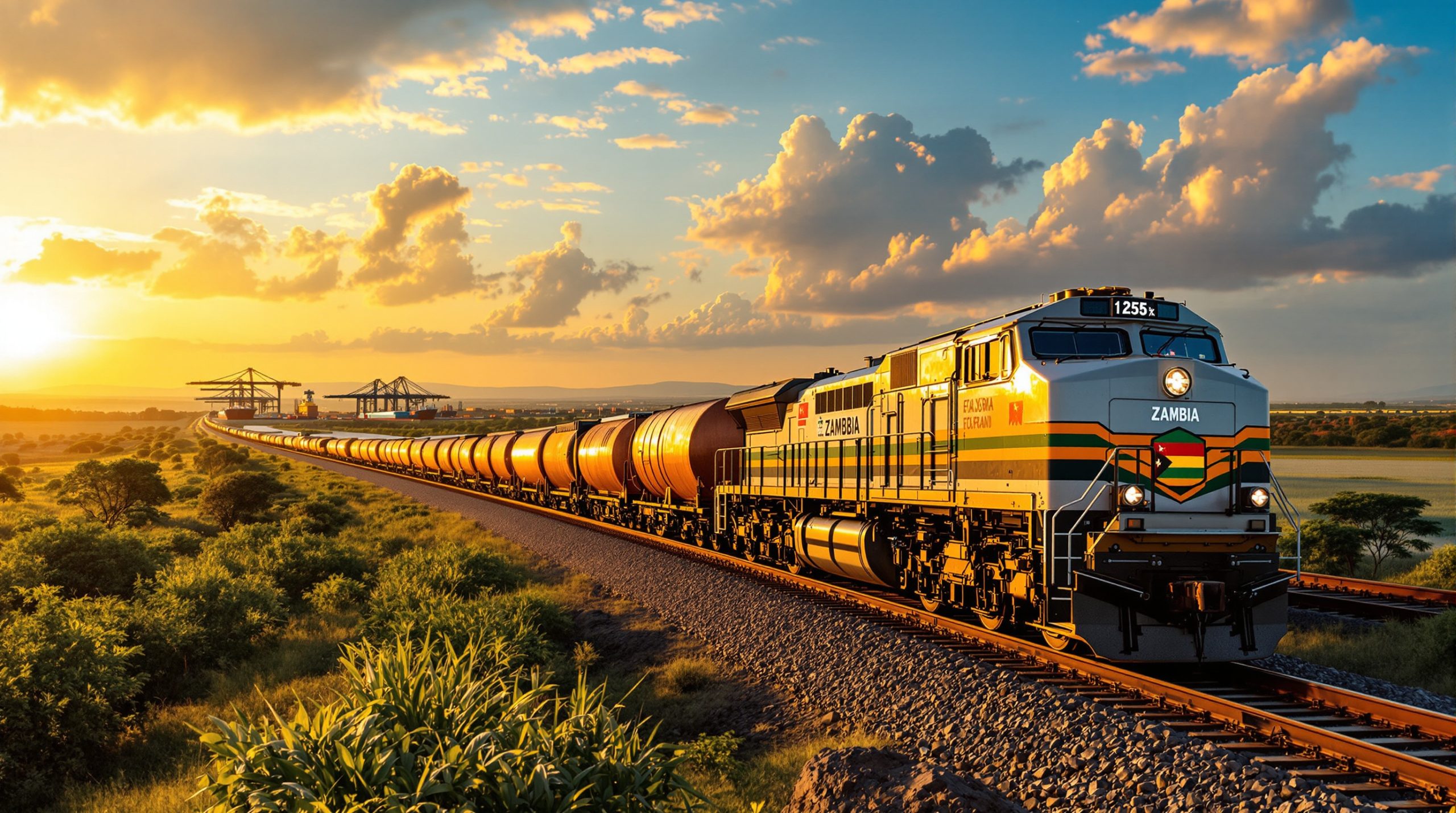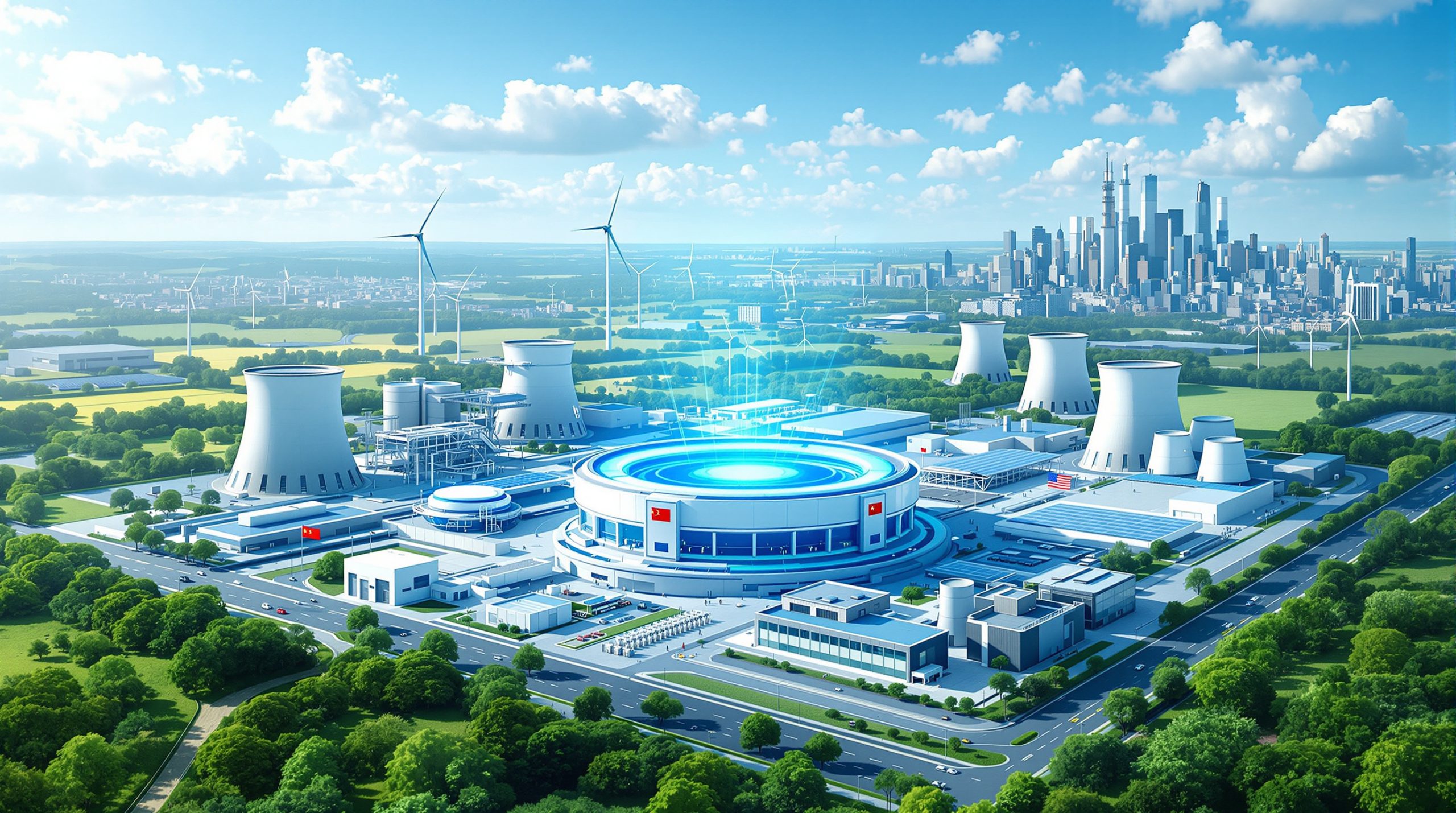China's $1.4 Billion Railway Deal: Transforming Zambia-Tanzania Trade Routes
The Tanzania-Zambia Railway (TAZARA) is undergoing a major transformation following a $1.4 billion agreement signed between China, Zambia, and Tanzania in September 2025. This strategic infrastructure investment aims to revitalize the aging 1,860-kilometer railway line that connects Zambia's copper-producing regions to Tanzania's Port of Dar es Salaam.
Key Components of the Railway Upgrade
The comprehensive rehabilitation project encompasses several critical elements to modernize the half-century-old railway system:
- Complete rehabilitation of existing rail infrastructure, including track replacement and reinforcement
- Acquisition of new locomotives and rolling stock to improve operational efficiency
- Purchase of modern passenger coaches to enhance comfort and reliability
- Addition of freight wagons to increase capacity for mineral exports
- Modernization of signaling and communication systems for safer operations
- Improvement of terminal facilities to streamline loading and unloading
Historical Context of the TAZARA Line
The TAZARA railway, originally constructed between 1970 and 1975 with Chinese financial and technical assistance, has served as a vital transportation corridor for nearly five decades. This project represented one of China's largest foreign aid initiatives at the time, demonstrating the country's early commitment to infrastructure development in Africa.
Despite its historical importance, operational challenges and deteriorating infrastructure have significantly limited the railway's effectiveness in recent decades. Years of maintenance backlogs, funding shortfalls, and competition from road transport have reduced its reliability, making this renovation crucial for regional development.
Why Is This Railway Deal Strategically Important?
Critical Mineral Export Route
The TAZARA railway provides a crucial alternative export route for copper and cobalt from Zambia and neighboring Democratic Republic of Congo (DRC). These minerals have become increasingly strategic in global supply chains, particularly as the world transitions to renewable energy technologies and electric vehicles.
The railway's renovation addresses a critical logistics challenge for landlocked Zambia, which has historically struggled with efficient export routes for its mineral resources. By improving this corridor, mining companies gain a more reliable pathway to global markets, which is essential for critical minerals energy security.
Transportation Capacity Expansion
The rehabilitation project promises substantial improvements in freight capacity:
- Current freight capacity stands at approximately 400,000 metric tons annually, far below the railway's original design capacity
- Projected first-year capacity post-upgrade aims to reach 1.2 million metric tons, tripling current volumes
- Potential capacity by year four is expected to reach 2.4 million metric tons, representing a six-fold increase from present levels
This capacity expansion directly supports increased mineral production and export potential, creating a virtuous cycle of investment and economic growth for the region.
Bypassing Logistical Bottlenecks
The upgraded railway will offer mining companies an alternative to congested South African logistics networks that have created export delays for critical minerals. Port congestion, rail inefficiencies, and border crossing delays through South Africa have historically added costs and uncertainties to mineral exports from Zambia.
The direct route to Dar es Salaam provides a more predictable transit option, potentially reducing shipping times by several days and lowering overall transportation costs. This reliability factor is particularly important for mining operations that require consistent export schedules to maintain production efficiency.
How Will the Railway Upgrade Be Implemented?
Concession Structure
While specific details of the concession agreement require verification from official sources, the project appears to follow a build-operate-transfer model common in infrastructure developments of this scale. This typically involves:
- Initial rehabilitation phase focused on infrastructure improvements
- Extended operational period where the contractor maintains and operates the railway
- Knowledge transfer components to build local capacity
- Eventual handover to host countries at the end of the concession period
Technical Improvements and Infrastructure Enhancements
The rehabilitation project will address multiple aspects of the railway system:
- Track replacement and reinforcement to accommodate heavier loads and higher speeds
- Bridge repairs and upgrades to ensure structural integrity
- Station renovations to improve passenger facilities and freight handling
- Modern signaling systems installation to enhance safety and operational efficiency
- Communications network enhancement for real-time monitoring and control
- Maintenance facility upgrades to support sustainable operations
These technical improvements aim to transform the railway from its current deteriorated state into a modern transportation corridor capable of meeting regional freight and passenger needs.
Timeline for Implementation
Based on typical infrastructure projects of this scale, the implementation is likely to follow a phased approach:
- Initial assessment and detailed engineering design phase (6-12 months)
- Prioritized rehabilitation of critical sections to enable early operational improvements
- Progressive modernization of signaling and communication systems
- Rolling stock acquisition and deployment aligned with infrastructure improvements
- Capacity building and training programs running concurrently with physical improvements
The full rehabilitation timeline will need to balance the urgency of improving operations with the practical constraints of working on an active railway line.
What Are the Economic Implications for Regional Development?
Mining Sector Benefits
The railway upgrade directly supports Zambia's copper industry, which serves as the backbone of the country's economy. Improved transportation infrastructure will deliver multiple benefits to the mining sector:
- Reduced export costs through more efficient logistics, potentially saving millions in annual transportation expenses
- Enabled increased production volumes as export constraints are removed
- Attraction of new investment in mineral exploration insights and development projects
- Support for value-added processing facilities that can benefit from reliable transportation
- Enhanced competitiveness of Zambian minerals in global markets
These improvements come at a critical time when global demand for copper is rising due to its essential role in renewable energy technologies and electric vehicles, as highlighted in recent copper price insights.
Regional Trade Enhancement
Beyond mining, the railway will facilitate broader economic integration by creating a more efficient transportation corridor:
- Reduced transportation costs for agricultural products, opening new export markets for farmers
- Supporting manufacturing sector development through improved access to imported inputs and export channels
- Enabling more efficient import of essential goods for landlocked regions
- Creating new trade opportunities between inland and coastal regions of East Africa
The railway effectively serves as an economic development corridor, not merely a transportation route for minerals.
Employment and Skills Development
The project is expected to generate significant employment opportunities across multiple sectors:
- Construction and rehabilitation phase jobs, providing immediate economic stimulus
- Long-term operational positions in railway management, maintenance, and services
- Technical skills development through knowledge transfer programs
- Supporting industries and services growth along the railway corridor
- Indirect employment in sectors benefiting from improved transportation
These employment benefits extend beyond the direct railway operations to include logistics services, maintenance facilities, and businesses serving railway users.
How Does This Project Compare to Other Regional Transportation Initiatives?
TAZARA vs. Lobito Corridor
The TAZARA upgrade represents part of a broader competition for influence in African infrastructure development:
| Feature | TAZARA Railway | Lobito Corridor |
|---|---|---|
| Primary Backer | China ($1.4 billion) | United States ($500 million) |
| Route | Tanzania to Zambia | Angola to DRC and Zambia |
| Length | 1,860 kilometers | 1,344 kilometers |
| Primary Purpose | Copper and cobalt export | Critical minerals transport |
| Current Status | Rehabilitation beginning | Under development |
| Port Access | Dar es Salaam, Tanzania | Lobito, Angola |
| Historical Context | 50+ years of operation | Recently revitalized corridor |
Both corridors aim to address similar challenges in mineral export efficiency but represent different geopolitical alignments and strategic priorities.
Strategic Competition in African Infrastructure
The TAZARA upgrade exemplifies the broader pattern of infrastructure competition between major powers in Africa:
- China's Belt and Road Initiative has funded numerous transportation projects across the continent
- The U.S. Partnership for Global Infrastructure and Investment represents Washington's response to Chinese influence
- European Union's Global Gateway strategy similarly seeks to provide alternative infrastructure financing
- Regional development banks and multilateral institutions also participate in transportation infrastructure funding
This competition benefits African nations by providing multiple funding sources for critical infrastructure needs, though it also requires careful diplomatic balancing in the context of ongoing US–China trade impact.
What Challenges Must Be Overcome for Success?
Historical Operational Issues
Previous attempts to revitalize TAZARA have faced significant challenges that must be addressed in the current project:
- Management inefficiencies that limited operational performance
- Maintenance backlogs resulting from years of underinvestment
- Operational funding shortfalls that prevented sustainable improvements
- Competition from road transport that captured market share
- Coordination challenges between two host countries with different priorities
Learning from these historical challenges will be essential for the current upgrade to achieve lasting success.
Implementation Risks
The current upgrade project faces several potential implementation challenges:
- Construction delays due to technical complexities or supply chain issues
- Cost management challenges in an era of inflation and supply constraints
- Environmental impact mitigation, particularly in sensitive ecological areas
- Coordination between multiple countries with different regulatory frameworks
- Integration with connecting transportation networks to ensure seamless operations
Proactive management of these risks will be crucial to maintaining the project timeline and budget.
Long-term Sustainability Concerns
For lasting success, the project must address fundamental sustainability issues:
- Sustainable maintenance funding mechanisms to prevent infrastructure deterioration
- Competitive pricing structures that balance financial viability with market competitiveness
- Efficient operational management systems and technologies
- Adaptation to changing market demands and cargo profiles
- Climate resilience in infrastructure design to withstand extreme weather events
These factors extend beyond the initial rehabilitation to encompass the entire operational lifecycle of the railway.
How Will This Impact Global Supply Chains?
Critical Minerals Security
The railway upgrade comes amid growing global competition for critical minerals essential to energy transition technologies:
- Copper demand is projected to increase significantly in coming decades due to electrification and renewable energy deployment
- Cobalt remains essential for battery technology despite efforts to reduce dependencies
- Diversification of supply routes reduces geopolitical risks in critical mineral supply chains
- Improved transportation efficiency could help stabilize mineral prices by reducing logistics costs
Major technology companies and manufacturers increasingly view secure access to these minerals as a strategic priority, making transportation infrastructure a critical component of supply chain security.
Manufacturing and Technology Implications
More reliable access to African minerals will support various global manufacturing sectors:
- Electric vehicle production requires substantial copper for motors and wiring
- Renewable energy infrastructure, particularly solar panels and wind turbines, is mineral-intensive
- Electronics manufacturing continues to demand high-quality conductive materials
- Construction materials supply chains benefit from more efficient mineral transportation
The railway effectively serves as a crucial link in these global manufacturing supply chains, connecting African mineral resources to worldwide markets.
What Does This Mean for China-Africa Relations?
Continuation of Long-term Partnership
China's involvement in the TAZARA railway spans five decades, representing one of the most enduring examples of China-Africa cooperation:
- Original construction in the 1970s demonstrated China's commitment to African development
- Ongoing technical assistance and equipment provision maintained the relationship through challenging periods
- Training programs for railway personnel built human capacity while strengthening bilateral ties
- Diplomatic relationship building through infrastructure cooperation has created lasting connections
This historical context gives China significant advantages in understanding the railway's challenges and opportunities.
Economic Integration Strategy
The railway project aligns with China's broader African engagement approach:
- Infrastructure development linked to resource access creates mutual benefits
- Creation of transportation corridors connecting resource-rich regions to global markets
- Long-term concession agreements ensuring operational involvement beyond construction
- Technology transfer combined with financing packages addresses multiple development needs
This comprehensive approach contrasts with more narrowly focused infrastructure investments that may address only specific technical challenges without considering the broader development context. Furthermore, it provides opportunities for South Africa mineral beneficiation initiatives as regional integration increases.
FAQs About the TAZARA Railway Upgrade
When was the original TAZARA railway constructed?
The original Tanzania-Zambia Railway was built between 1970 and 1975 with Chinese financial and technical assistance. At the time, it represented one of China's largest foreign aid projects and demonstrated solidarity with newly independent African nations.
How will the upgrade affect passenger services?
The rehabilitation includes new passenger coaches and station improvements, which should enhance comfort, reliability, and potentially increase the frequency of passenger services between Tanzania and Zambia. This passenger service component provides important social benefits beyond mineral transportation.
What role does copper play in Zambia's economy?
Copper mining contributes approximately 70% of Zambia's export earnings, making efficient transportation infrastructure critical to the country's economic development. The metal's price volatility directly impacts national revenues, highlighting the importance of cost-effective export routes.
How does this project relate to China's Belt and Road Initiative?
While not explicitly labeled as a Belt and Road project, the TAZARA upgrade aligns with the initiative's goals of improving connectivity between China and resource-rich regions through infrastructure development. It represents the kind of strategic transportation corridor that characterizes many BRI investments.
What environmental considerations are part of the railway upgrade?
The project will need to address environmental impacts during construction and operation, including habitat protection along the route and potential reductions in carbon emissions by shifting freight from road to rail transport. Modern railway operations typically produce significantly lower emissions per ton-kilometer than road transportation.
Future Outlook for Regional Transportation Networks
The TAZARA railway upgrade represents just one component of Africa's evolving transportation landscape. As mineral demand grows and regional integration deepens, several trends are likely to emerge:
- Further development of complementary transport corridors creating a more interconnected network
- Integration of railway systems with port upgrades to eliminate bottlenecks
- Digital logistics platforms enhancing efficiency through better cargo tracking and management
- Increased investment in maintenance capabilities to ensure long-term sustainability
- Greater coordination of cross-border transportation policies to streamline regional trade
The success of this project could serve as a model for similar infrastructure revitalization efforts across the continent, potentially transforming how Africa's mineral wealth reaches global markets while creating more value within the region.
The TAZARA rehabilitation demonstrates how historical infrastructure can be reimagined to meet contemporary economic needs while building upon established partnerships. As Africa continues its economic development journey, such transportation corridors will play increasingly vital roles in connecting the continent's resources and markets with global value chains.
Are You Interested in the Latest Resource Project Developments?
Discovery Alert's proprietary Discovery IQ model identifies and analyses significant ASX mineral discoveries in real-time, delivering actionable investment insights before the broader market. Discover why major mineral findings can lead to exceptional returns by exploring Discovery Alert's dedicated discoveries page and position yourself ahead of the market.




